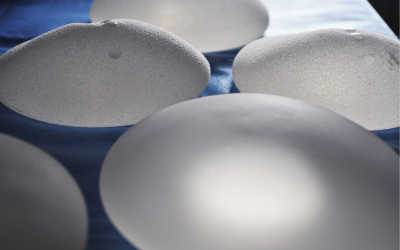Marketing a medical device across borders I: United Kingdom
By: Anne Sophie Dil – Co-founder of NAALA
Published on 28 October, 2021
It is no longer newsworthy: the United Kingdom has left the European Union. This has consequences, including for the application of European laws and regulations. The UK has chosen not to implement the European Medical Devices Regulation (EU MDR) and European In-Vitro Diagnostics Regulation (EU IVDR) during the transition period.
Nevertheless, the UK market remains an interesting one, which many manufacturers of (innovative) medical devices would like to tap into. What rules should be considered when placing a medical device on the UK market? Does the CE mark bear any value in the UK?
The EU MDR applies to EU member states. Since the United Kingdom did not implement the EU MDR during the Brexit transition period, EU MDR is not applicable in the UK.
Currently, devices in Great Britain (i.e., England, Wales, and Scotland) are regulated under the UK MDR 2002 (as amended in 2019), which gives effect to familiar European Directives:
- Directive 90/385/EEC on active medical devices (EU AIMDD),
- Directive 93/43/EEC on medical devices (EU MDD), and
- Directive 98/79/EC on in vitro diagnostic medical devices (EU IVDD).
A regulatory framework for medical devices in Britain is being developed, considering international standards and global harmonization (as with the EU MDR). This Medicines and Medical Devices Act (MMDA) 2021 is intended to address the regulatory gap identified by the European Commission in the EU AIMDD, EU MDD and EU IVDD. For example, the use of unique device identifiers and registration requirements, as currently in place for the European market, is being considered for the UK market. Currently, the MMDA 2021 is at the open consultation stage.
In Northern Ireland, however, the European rules do apply. A number of additional requirements have been established, including, among others, the granting of a UKNI (United Kingdom Northern Ireland) mark in addition to the European CE mark and the registration of medical devices placed on the Northern Ireland market with the MHRA.
The UK MDR 2002 defines a medical device as follows (broken down into bullets for clarification):
- an instrument, apparatus, appliance, material, or other article
- whether used alone or in combination,
- together with any software necessary for its proper application, which
a) is intended by the manufacturer to be used for human beings for the purpose of
i) diagnosis, prevention, monitoring, treatment, or alleviation of disease,
ii) diagnosis, monitoring, treatment, alleviation of or compensation for an injury or handicap,
iii) investigation, replacement, or modification of the anatomy or of a physiological process, or
iv) control of conception, and
b) does not achieve its principal intended action in or on the human body by pharmacological, immunological, or metabolic means,
- even if it is assisted in its function by such means, and
- includes devices intended to administer a medicinal product or
- which incorporate as an integral part a substance which, if used separately, would be a medicinal product and
- which is liable to act upon the body with action ancillary to that of the device.
This definition largely corresponds to the definition of a medical device from the MDD. Therefore, the main difference from the definition of a medical device under the EU MDR is the scope. Under the EU MDR, the definition of a medical device is slightly more comprehensive. For example, the definition of a medical device under the EU MDR includes: any article intended to be used for the prediction or prognosis of disease, or for providing information through in vitro testing of human specimens.
Organizations wishing to market a medical device in Great Britain should consider the following:
- registration with the MHRA,
- designation of a UK Responsible Person, and
- assignment of a UKCA-mark.
The process of bringing a medical device to market in Great Britain begins with registering the product with the MHRA. As of May 1, 2021, the registration requirement applies to the following products:
- active implantable medical devices,
- class III medical devices under UK MDR 2002,
- implantable medical devices class IIb under UK MDR 2002, and
- IVD List A products under UK MDR 2002.
As of September 1, 2021, this list has been expanded to include the following medical devices:
- class IIb non-implantable medical devices under UK MDR 2002,
- class IIa medical devices under UK MDR 2002,
- IVD List B products under UK MDR, and
- self-test IVDs
From January 1, 2022, the following products will also need to be registered with the MHRA before they can be placed on the Great Britain market:
- class I medical devices under UK MDR 2002, and
- generic IVDs.
The UK Responsible Person acts on behalf of and in the name of the manufacturer. If an organization wants to place a medical device on the UK market, but is located outside the UK, a UK Responsible Person must act as the manufacturer’s representative.
For example, the UK Responsible Person will be required to carry out the abovementioned registration with the MHRA. In summary, the further obligations of the UK Responsible Person include:
- ensuring that technical documentation is available, and that it has been reviewed pursuant to an appropriate conformity assessment,
- responding to requests from the MHRA, such as providing information to demonstrate compliance of the medical device (including access to the medical device),
- working with MHRA to eliminate risks associated with the medical device by taking preventative or corrective actions,
- communicate complaints and reports of potential incidents related to the medical device to the manufacturer for action, and
- monitor whether the manufacturer continues to meet its obligations, and if not: terminate the relationship with the manufacturer, and inform MHRA of such termination.
There are no specific requirements regarding qualifications or knowledge to be a UK Responsible Person. This ‘person’ can be an individual, or a legal person such as a company. An importer may also be a UK Responsible Person.
Unfortunately, there is no list of (potential) UK Responsible Persons available. However, in EUDAMED it is possible to filter by EU Authorised Representatives – a role that corresponds to the UK Responsible Person. The MHRA previously recommended contacting EU Authorised Representatives to determine if they offer services as a UK Responsible Person.
However, if an organization only wants to place a Class I or custom-made medical device, or a general IVD on the Northern Ireland market, a UK Responsible Person is not required. Please note that this only applies to the Northern Ireland market, the UK (England, Wales, and Scotland) market does require a UK Responsible Person in this case.
The UKCA mark is very similar to the CE mark. The UKCA (UK Conformity Assessed) is used for specific products, including medical devices, placed on the Great Britain market.
CE marks, which are used for specific products placed on the European market (European Economic Area, EEA), will continue to be accepted on the Great Britain market until June 30, 2023. This applies to CE markings issued under the EU AIMDD, EU IVDD and EU MDD as well as CE markings granted under the EU IVDR and EU MDR.
After June 30, 2023, CE marks will no longer be recognized in Great Britain. From then on, all medical devices on the Great Britain market must have a (valid) UKCA mark.
In Northern Ireland, however, different rules apply. The CE marking remains valid, and medical devices must therefore comply with European legislation. The UKCA marking is not valid in Northern Ireland. In some situations, a UKNI marking is required in addition to the CE marking for placing medical devices on the Northern Ireland market.
As mentioned, different rules apply to medical devices in Great Britain and Northern Ireland. In Northern Ireland, the European IVDR and MDR apply. In addition to the CE mark that manufacturers must assign to their medical devices under these regulations, they must assign a UKNI mark if:
- a medical device is placed on the Northern Ireland market,
- it is a medical device of class IIa or higher, and
- the conformity assessment procedure is carried out by a UK notified body.
The UKNI marking is never used on its own. The UKNI marking always accompanies a CE marking.
The UKNI marking is specifically intended for the Northern Ireland market, and is not accepted on the European market and the Great Britain market.
Manufacturers of class I medical devices, and generic IVDs, can self-certify for UKCA marking.
If a medical device is to be assigned to a higher risk class (i.e., IIa, IIb, or III) pursuant to the UK MDR 2002, an independent third party must be involved in the conformity assessment procedure. This independent third party is known in the UK as UK Approved Body and similar to the Notified Body under the European IVDR and MDR.
The UK Approved Bodies can carry out conformity assessments for the purpose of awarding a UKCA for the Great Britain market. In addition, UK Approved Bodies can carry out assessments for the purpose of awarding the “CE UKNI” mark for the Northern Ireland market. UK Approved Bodies cannot carry out conformity assessments for the purpose of awarding CE markings for the European market.
At NAALA we continue to closely monitor developments in the UK. Are you planning to place your medical device on the Great Britain and/or North Ireland market? Please feel free to contact us for support.
Please note that all details and listings do not claim to be complete, are without guarantee and are for information purposes only. Changes in legal or regulatory requirements may occur at short notice, which we cannot reflect on a daily basis.
Other articles you may be interested in:
Liked the article? Maybe others will too. Feel free to share!



